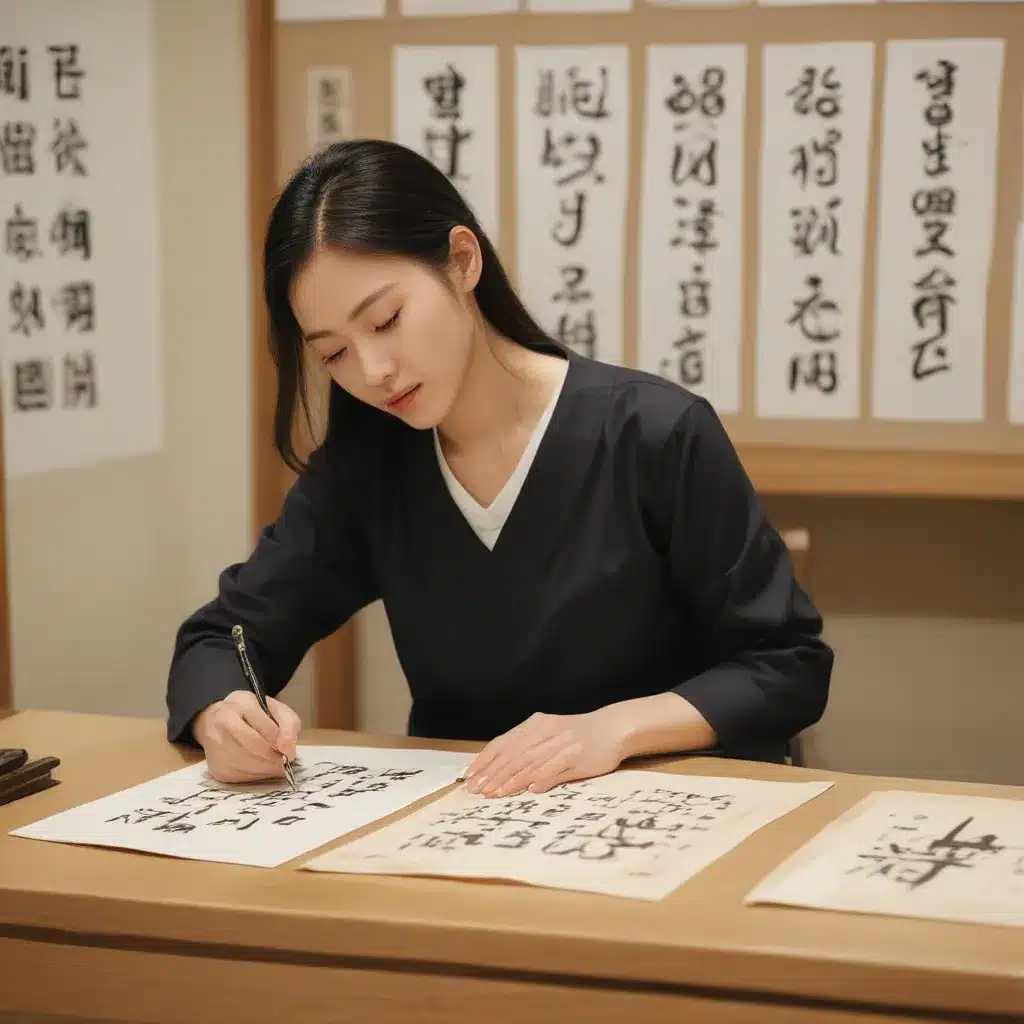
Discovering the Ancient Art of Korean Writing
As I stepped through the ornate gates of the Hangeul Museum in Seoul, South Korea, I couldn’t help but feel a sense of anticipation. This wasn’t just another museum visit – it was a chance to dive headfirst into the captivating world of Korean calligraphy.
The museum’s exterior, with its harmonious blend of traditional and modern architecture, set the stage for the cultural odyssey that lay ahead. I knew I was in for a treat, having discovered this hidden gem through my research on the Hotel Stay Inn Seoul website.
Uncovering the Treasures of Hangeul
As I wandered through the museum’s galleries, I was immediately struck by the sheer beauty and elegance of the calligraphic works on display. From delicate brush strokes to bold, sweeping lines, each piece told a story of the rich history and evolution of the Korean writing system, known as Hangeul.
One of the first exhibits that caught my eye was a facsimile of the Hunminjeongeum, the manual that introduced Hangeul to the world in 1446 under the reign of King Sejong. As I learned, this groundbreaking phonetic script was designed to be accessible to all, including women and slaves who were previously excluded from the world of literacy.
Mastering the Art of Calligraphy
As I delved deeper into the museum, I discovered the dedicated Calligraphy Experience Center, where I couldn’t resist the opportunity to try my hand at this centuries-old art form. Under the guidance of a skilled calligrapher, I learned the proper techniques for holding the brush, controlling the ink, and crafting each stroke with precision and grace.
At first, my attempts were clumsy and lacked the fluidity I had admired in the museum’s displays. But as I practiced, I began to appreciate the meditative rhythm of the calligraphic process. Each stroke became a dance, a manifestation of my inner focus and concentration.
Connecting with the Past, Embracing the Future
One of the most captivating aspects of the Hangeul Museum was its ability to bridge the gap between the past and the present. As curator Virginia Moon explained, the exhibition not only showcased the timeless masterpieces of Korean calligraphy but also explored how contemporary artists are reinventing and reinterpreting this ancient art form.
I was particularly fascinated by the work of Gim Jeonghui, a renowned Joseon-era calligrapher who managed to synthesize a unique style that still captivates viewers today. Seeing his masterful creations side by side with the innovative digital calligraphy of Ahn Sang-soo, the “father of graphic design in Korea,” reinforced the enduring legacy of this art form.
Uncovering the Untold Stories
One of the highlights of my visit was discovering the hidden stories within the museum’s collection. I was especially moved by the rare slave letters, which provided a tangible glimpse into the lives of the nobi class – a part of Korean history that is often overlooked.
The exhibition on the Hangeul writings of the Princess Deogon family was another unexpected treasure, showcasing the profound personal connections that could be expressed through the elegant Hangeul script. These intimate, handwritten letters revealed the deep familial love and devotion that transcended time and social boundaries.
A Transformative Experience
As I reluctantly bid farewell to the Hangeul Museum, I couldn’t help but feel a sense of wonder and appreciation for the rich tapestry of Korean culture that I had just experienced. The museum had not only introduced me to the captivating art of calligraphy but had also opened my eyes to the profound stories and legacies hidden within the strokes of the Hangeul script.
I left the museum with a newfound respect for the power of written expression and a renewed desire to continue exploring the depths of this ancient yet ever-evolving art form. The Hangeul Museum had truly transformed my understanding of Korean culture and left me eager to return and delve even deeper into the enchanting world of Korean calligraphy.

